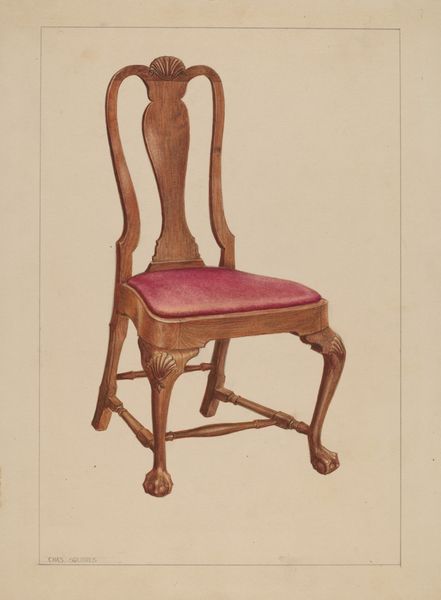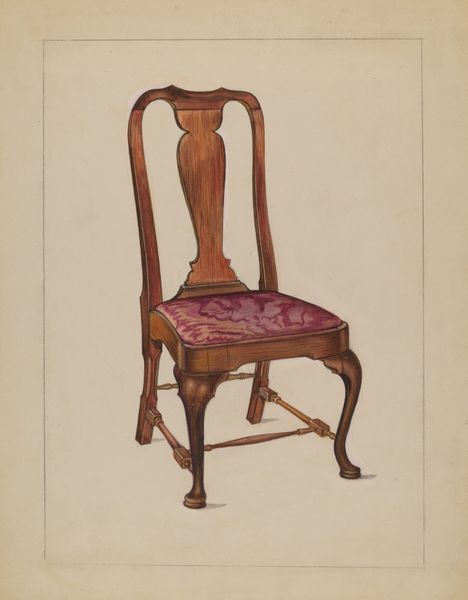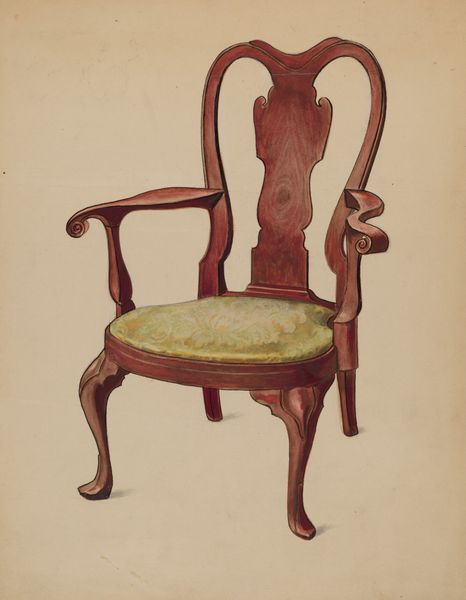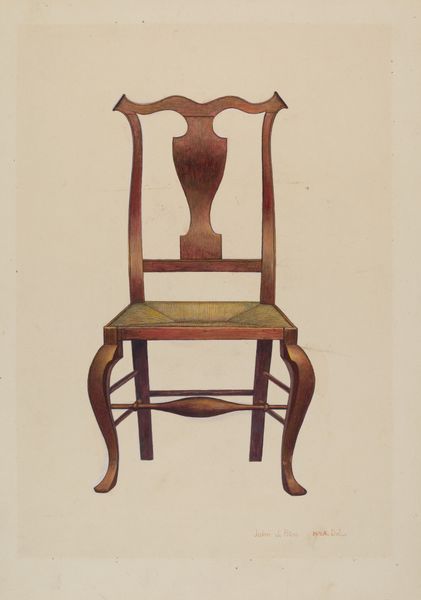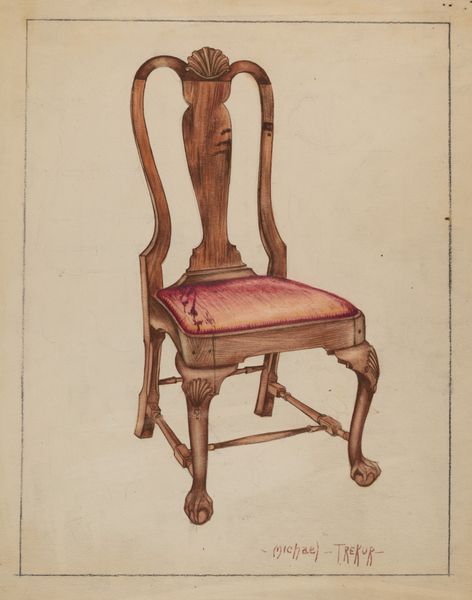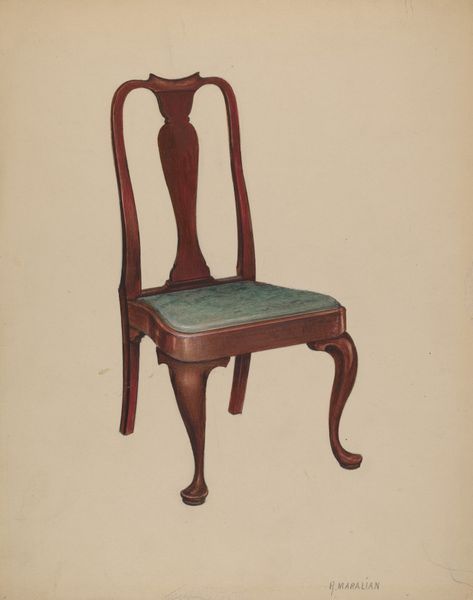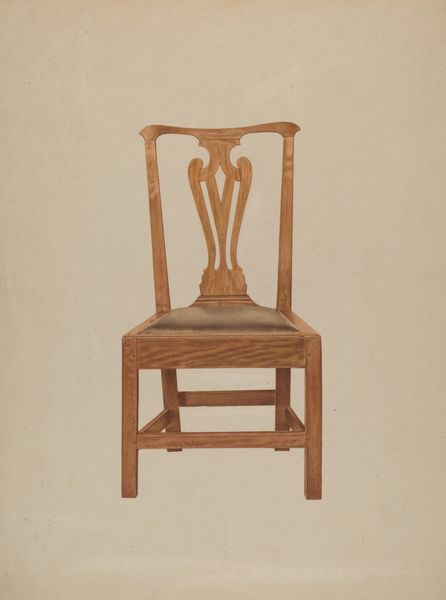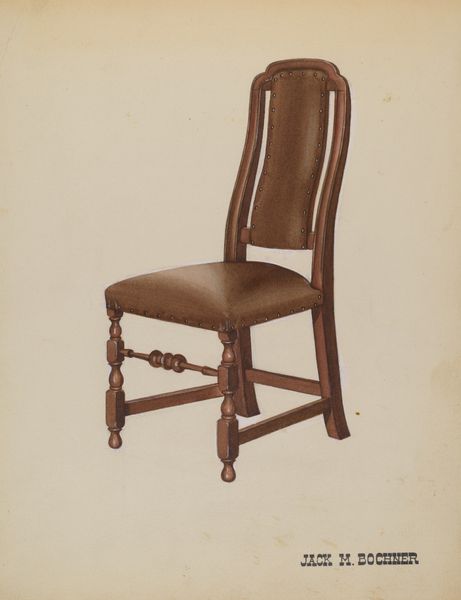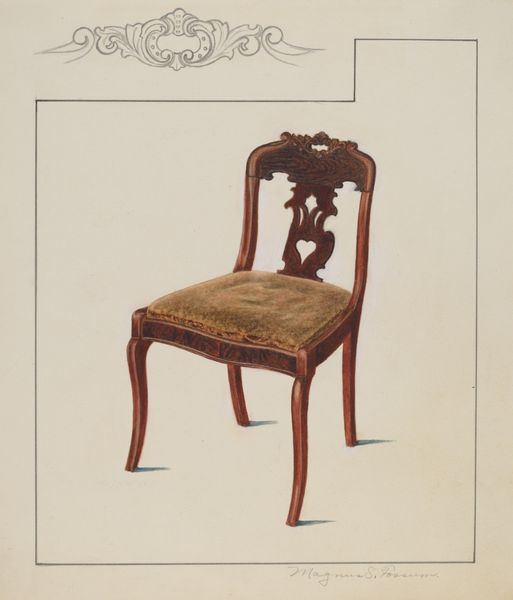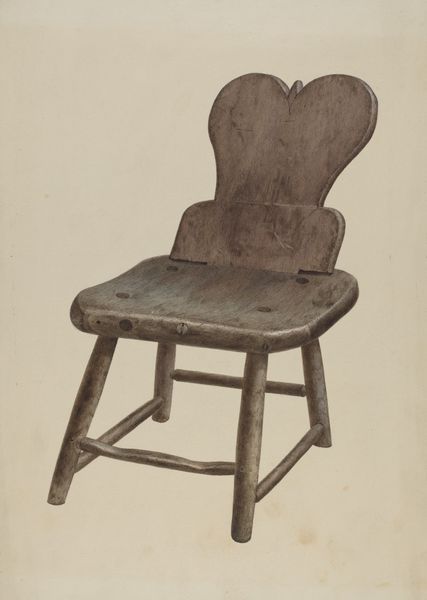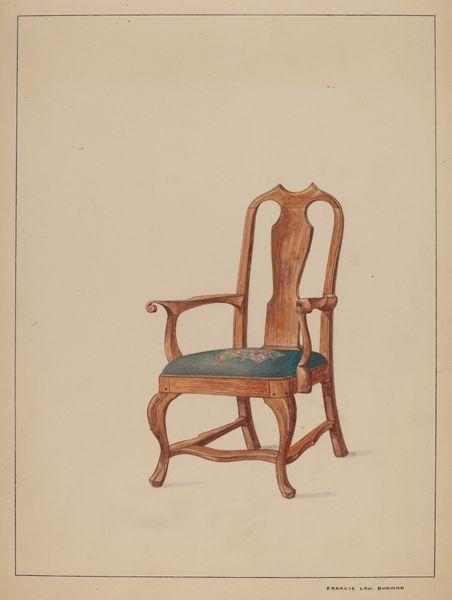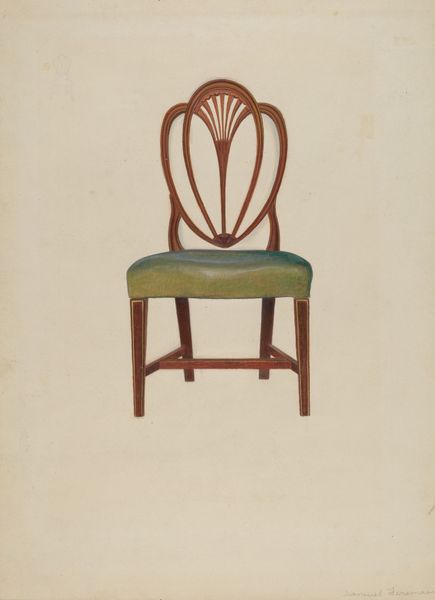
drawing, coloured-pencil, pencil
#
drawing
#
coloured-pencil
#
pencil drawing
#
coloured pencil
#
pencil
#
decorative-art
Dimensions: overall: 29.2 x 22.9 cm (11 1/2 x 9 in.)
Copyright: National Gallery of Art: CC0 1.0
Editor: This is Charles Squires's "Side Chair" from around 1937, made with pencil and coloured pencil. It's a straightforward depiction of a decorative chair, almost like a furniture blueprint. What catches your eye about this particular piece? Curator: It's interesting to consider this drawing as an artifact related to furniture production. Squires likely wasn't creating "art" in the traditional sense but documenting or proposing a design. Think about the labour involved, the access to materials, the social status implied by this chair design in the 1930s. What was being consumed, and by whom? Editor: So you’re focusing less on the chair itself as an object of beauty, and more on its place within a system of production and consumption? Curator: Exactly. This image provides clues about the socio-economic context of the time. The precise lines, the choice of materials—pencil and coloured pencil, not paint or other ‘high art’ media—suggest a functional purpose, not necessarily an aesthetic one. What does that tell us about the artist and their potential role? Editor: I hadn't considered it that way. I guess I was focused on the chair's design elements. The carving, the upholstered seat. Curator: And those details are important! But as materialists, we need to ask: Who had access to this kind of luxury in 1937? Who made it, and under what conditions? The drawing, then, becomes a portal to understanding the historical relationships of labour, capital, and taste. Editor: That makes me think about how mass production changed things. Would a drawing like this still be relevant after mass-produced furniture became more common? Curator: A great question. The methods and value placed on handcrafted items changed drastically as mechanized production became the standard. We can interpret this drawing as a window into a specific time of American history when artisanal methods were getting replaced by industrial ones, deeply impacting culture and manufacturing of furniture and design itself. Editor: It's fascinating to think about the object’s place in a system instead of viewing it as an isolated artwork. Thanks for changing my perspective on this drawing! Curator: And thank you for your thoughtful questions. Looking at art through a materialist lens can really deepen our understanding of history and culture.
Comments
No comments
Be the first to comment and join the conversation on the ultimate creative platform.
